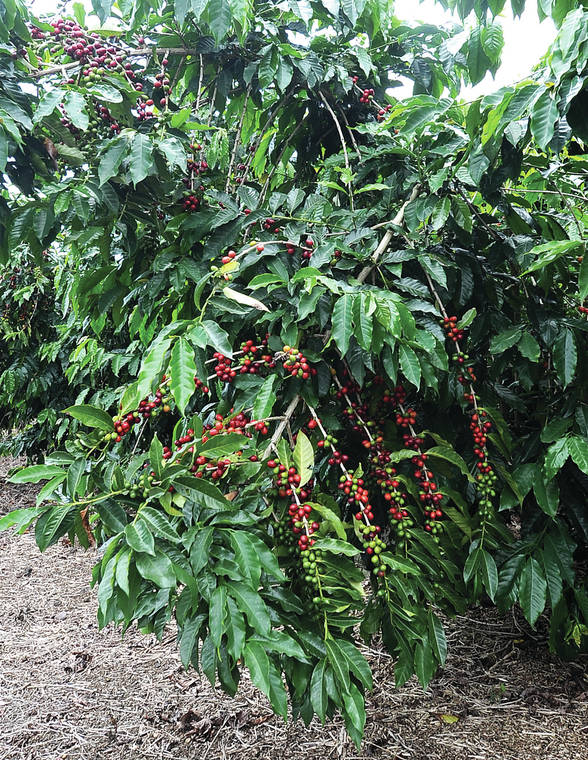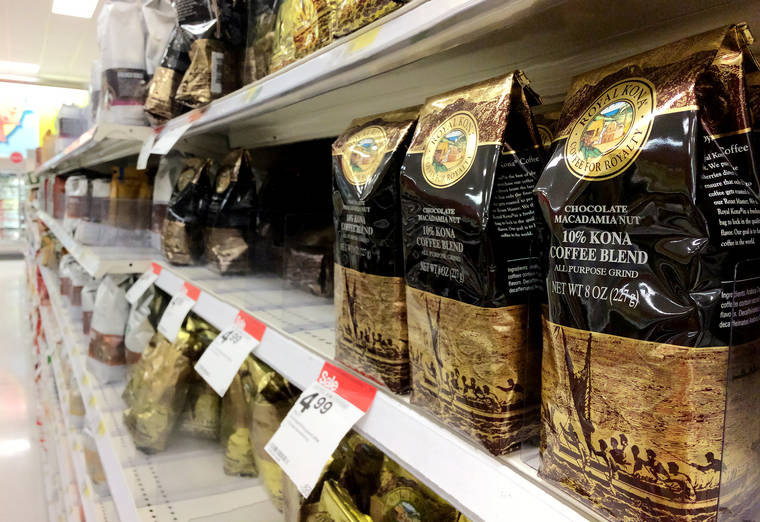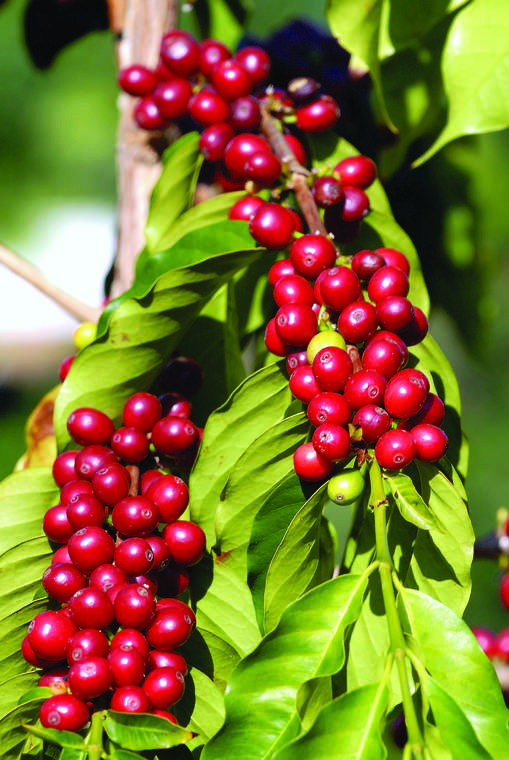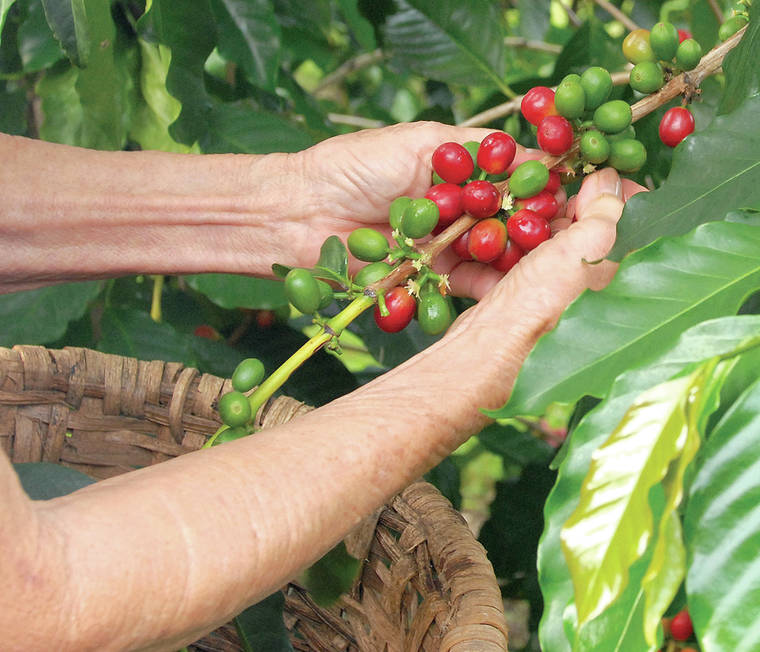The latest effort to change labeling requirements for Hawaiian-grown coffee blends is making its way through the state Legislature.
For more than 26 years, Hawaii has been the only region in the world that statutorily regulates the uses of its geographic names on labels of specialty agricultural products but requires only 10% of the product originate in the geographic area indicated, states House Bill 1886, which was introduced by Oahu and Big Island representatives, including Richard Creagan (D-Kona, Ka‘u), Nicole Lowen (D-North Kona) and David Tarnas (D-North Kona, North and South Kohala).
As written, the bill would increase the minimum from 10% to 51% and require labeling that lists the origin of the remaining coffee in percentages.
Coffee processors are currently allowed to use up to 90% imported coffee and still call it a Kona Blend under Hawaii law passed in 2001.
Suzanne Shriner, president of the Kona Coffee Farmers Association, says the current labeling requirement causes confusion with consumers, who think they are getting a blend of Kona coffees.
“How the Kona name goes, the state goes,” she said. “Consumers who taste the 10% blend and think it is Kona coffee get a bad taste and that diminishes the Kona name. Plus it takes money out of the growers product and puts it into mainland companies.”
The measure cites a 2018 report by the Food and Agriculture Organization of the United Nations and the European Bank for Reconstruction and Development that concluded Kona Coffee does not enjoy any strong protection of its name from the State of Hawaii and as a result, downstream stakeholders, rather than farmers, reap the economic benefits of the fame of Kona.
KCFA Board Member Chet Gardiner in written testimony submitted to the House Committee on Agriculture said the current blending rule “threatens our industry.”
“People who love coffee and are willing to pay a premium for fine tasting coffee and then taste these ‘blends’ inevitably retain extremely negative feelings about the entire Kona Coffee experience as well as an aversion to the idea of spending the money to buy real 100% Kona,” said Gardner.
Shriner also said international distributors are hesitant to purchase Kona Coffee.
“They don’t trust us because of the fraud issue,” she said, adding using the Kona name amounts to “economic rent taking.”
Coffee farmer Bruce Corker in written testimony pointed to a 2010 analysis by resource economist Marvin Feldman that found as much as $14.4 million each year may be flowing out of the pockets of Kona coffee farmers and into the “excess profits” of blenders. The Feldman study indicates the average 5-acre Kona coffee farm loses almost $20,000 per year because of 10% blends.
Phyllis Shimabukuro-Geiser, Board of Agriculture chairperson, wrote in testimony that listing individual non-Hawaii grown coffee origins on a coffee blend label would place an “extreme hardship” on the blending industry.
“The individual blend coffee components may not be available, at all times due to logistics, crop size and pricing. If any one of the blend components were not available, it would make the packaging materials obsolete which would be very costly to a business,” she wrote.
In 2006, according to Shimabukuro-Geiser, the department conducted a study, “Hawaii’s Coffee Industry Structural Change and Its Effects on Farm Operations,” which revealed blending pure Kona coffee with less expensive import varieties helps expand the market base for Kona coffee by overcoming the budget constraints of some consumers.
The study also revealed the quantity supplied of pure Kona coffee is reduced by the amount used for blending which, in effect, creates a positive pressure on the price of pure Kona coffee.
Shriner disagrees, noting blenders will continue to argue more studies are needed.
“They will testify that coffee prices will crash should they stop buying Kona for blends. But this is not economic reality,” Shriner explained. “Over the last two decades, the market for Hawaii coffee has changed drastically and many growers now sell out their entire crop online. The global demand for Kona far exceeds supply and the value of our crop is at record highs. Selling direct-to market has made small farms financially viable.”
Although bills have been introduced and killed since the passage of the 2001 blend law, Shriner feels more optimistic this legislative session because of the support of the Hawaii Coffee Association, which represents growers on all islands and regions, providing a bigger voice.
Even though most of the state’s coffee is produced in Kona, thriving industries have developed in Ka‘u, Maui, Kauai and Oahu.
“It’s not just a Kona problem,” she said.
Hawaii County Councilwoman Rebecca Villegas on Thursday thanked legislators who have worked so hard on the bill.
“I am in full support of this bill. It is time for the State of Hawaii to provide strong protection to the name Kona Coffee. It is time for farmers to reap a more substantial economic benefit from the fame of the Kona name. It is time to make it a legal requirement that coffee labels accurately and honestly reflect their products,” she said.
House Bill 1886 was heard and passed with amendments by the House Committee on Agriculture on Wednesday. Details regarding the amendments were not available and West Hawaii Today was unable to reach Creagan, who chairs the committee, as of press time Thursday.
The measure next needs to secure a hearing before the House Committee on Consumer and Commerce Protection. No hearing had been set as of press time.















